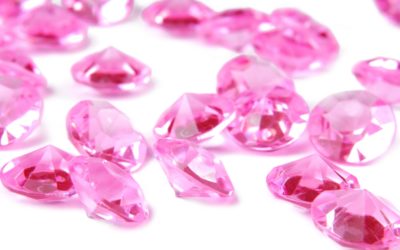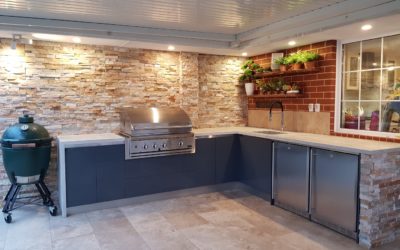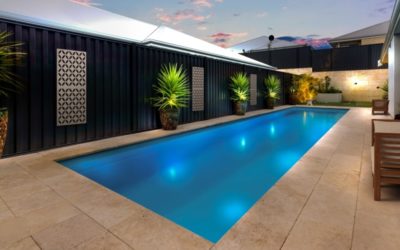Thinking of Getting a Loan for Cosmetic or Plastic Surgery?
The information compiled in this article is of a general nature and covers some of the questions we have been asked when providing personal loanswww.loans123.com.au can help with loans for cosmetic and pla... for cosmetic surgery clients. It may not be specific to your needs. This information has been gathered from a range of sources including some anecdotal observations from clients.
We have a female staff member who is in the research phase of having a breast lift with augmentation surgery and I have drawn from her research for answers and information.
www.loans123.com.au may be able to help you with finance for your chosen procedure.
Any decision made in relation to cosmetic or plastic surgeryThe surgical specialty or procedure involved with the restor... should be made in conjunction with a qualified medical practitioner.
These notes relate to Breast AugmentationSurgery to enlarge and lift breasts, also known as a boob jo... (Mammoplasty), Breast Lift (MastopexySurgical procedure to lift the breasts.) and Breast Reduction (Mammoplasty).
Profiles.

Cosmetic and Plastic surgeryThe surgical specialty or procedure involved with the restor... can lead to an increase in confidence and self- esteem. This is a big decision and can be a life changing event.
If you are contemplating cosmetic or plastic surgeryThe surgical specialty or procedure involved with the restor... of any kind it pays to do your research and find the surgeon who is best qualified to meet your expectations and needs.
People can often struggle to find the money that is required for plastic or cosmetic surgery.
www.Loans123.com.au specialises in loanswww.loans123.com.au can help with loans for cosmetic and pla... for Cosmetic and Plastic surgeryThe surgical specialty or procedure involved with the restor....
Plastic surgeryThe surgical specialty or procedure involved with the restor... loanswww.loans123.com.au can help with loans for cosmetic and pla... and Cosmetic surgery loanswww.loans123.com.au can help with loans for cosmetic and pla... are offered on an unsecured personal loan basis.
Loans123.com.au understands that cosmetic and plastic surgeryThe surgical specialty or procedure involved with the restor... is a very personal decision. Each procedure and decision being unique to the individual concerned.
We have a female staff member who would be happy to discuss her own research to date.
Breast AugmentationSurgery to enlarge and lift breasts, also known as a boob jo...
Breast augmentationSurgery to enlarge and lift breasts, also known as a boob jo... or mammoplasty, commonly known as a boob job, is the term for increasing breast size by the surgical implantation of implants or fillers.
Over the years many improvements have been made in both technique and the materials used for implants.
Some Facts
- Breast augmentationSurgery to enlarge and lift breasts, also known as a boob jo... has gone from being an unusual procedure in the 1960’s to being one of the most common surgery procedures in Australia and America.
- This is a surgical procedure to increase the size, change the shape or lift the breasts.
- Breast augmentationSurgery to enlarge and lift breasts, also known as a boob jo... can benefit women if their breasts have sagged after pregnancy, breast-feeding, weight loss or through ageing.
- Breast implantsMedical devices inserted inside the breast to enlarge a brea... can be tailored to suit your desired size and shape. There are silicone or saline implantsBreast implants filled with a salt water solution., round or teardrop shape (anatomical), smooth or textured surface with four different levels of projection from low to ultra-high profile. The type you and your surgeon will choose will depend on the type of surgery and the effect you desire.
- They can be placed either under or over the pectoral muscle.
- Surgeons provide patients with sample implants called sizers which can be placed in your bra so you can see and feel the size and weight of the implantA medical device placed inside the body to enhance a certain... you are thinking about getting. It is also suggested to fill with a stocking with uncooked rice equal to the suggested implantA medical device placed inside the body to enhance a certain... size.
- Weight equivalent guide: 1cc = 1gm. ¼ cup of rice = 59cc, 1/3 cup of rice = 78cc, ½ cup of rice = 118cc, 1 cup of rice = 236cc. weights are a guide only and may vary.
https://www.verywellhealth.com/choose-the-right-breast-implant-size-with-the-rice-test-2709981
- A typical surgery for breast implantsMedical devices inserted inside the breast to enlarge a brea... usually takes around 1 to 2 hours, this can take longer depending on the level of work required.
- A surgical compression bra is required to be worn for up to 3 months post-surgery.
- Exercise and strenuous activity should be avoided for six to eight weeks or as directed by your surgeon. This will depend on whether the implantA medical device placed inside the body to enhance a certain... is placed under or over the pectoral muscle.
- Experiences, results and recovery will vary depending on the individual and the procedure undergone.
- Breast augmentationSurgery to enlarge and lift breasts, also known as a boob jo... or a boob job is one of the most common and popular cosmetic procedures worldwide. It is estimated that there are more than 13,300 procedures per year in Australia.
There are three kinds of breast augmentationSurgery to enlarge and lift breasts, also known as a boob jo... performed in Australia.
- Primary Augmentation – Altering the size, shape and feel of breast
- Revision Augmentation – Correction of a previous augmentation surgery
- Primary Reconstruction – The need to replace breast tissue as a result of accident, injury, trauma or disease
Silicone or SalineSalt water solution.?
https://www.australiacosmeticclinics.com.au/2016/10/17/breast-implants-silicone-vs-saline/
Silicone Breast ImplantsMedical devices inserted inside the breast to enlarge a brea...
In Australia, approximately 99% of breast augmentationSurgery to enlarge and lift breasts, also known as a boob jo... procedures use silicone, however salineSalt water solution. is still an option.
Silicone breast implantsMedical devices inserted inside the breast to enlarge a brea... are filled with silicone gel, chosen as a filler material because of its excellent cohesion, durability and robustness. This means silicone implantsBreast implants full of a thick elastic gel. are long lasting, soft and light.
Another big advantage of silicone implantsBreast implants full of a thick elastic gel. is that the gel feels slightly more like natural breast tissue than salineSalt water solution., resulting in very natural looking and feeling breasts. There is less “rippling” and silicone provides a very normal slope to the upper part of the breast.
The main drawback of silicone implantsBreast implants full of a thick elastic gel. is that if the implantA medical device placed inside the body to enhance a certain... leaks, the gel may remain within the implantA medical device placed inside the body to enhance a certain... shell, or may escape into the breast implantA medical device placed inside the body to enhance a certain... pocket. A leaking implantA medical device placed inside the body to enhance a certain... filled with silicone gel will not collapse. Therefore, if you choose silicone implantsBreast implants full of a thick elastic gel., you may need to visit your plastic surgeon or have ultrasounds regularly to make sure the implants are functioning properly.
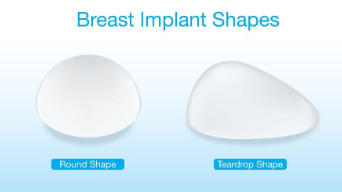
SalineSalt water solution. Breast ImplantsMedical devices inserted inside the breast to enlarge a brea...
With salineSalt water solution. breast implantsMedical devices inserted inside the breast to enlarge a brea..., the implantA medical device placed inside the body to enhance a certain... is filled with sterile saltwater. SalineSalt water solution. breast implantsMedical devices inserted inside the breast to enlarge a brea... provide a uniform shape, firmness and feel.
The biggest advantage of saline implantsBreast implants filled with a salt water solution. is that if the implantA medical device placed inside the body to enhance a certain... shell ever leaked, a salineSalt water solution. implantA medical device placed inside the body to enhance a certain... will simply collapse, with the salineSalt water solution. being absorbed and naturally expelled by the body. Many people see this as a very safe and risk-free option.
The disadvantage with having saline implantsBreast implants filled with a salt water solution. is if the implantA medical device placed inside the body to enhance a certain... ruptures it will make you look flatter on one side until you can have another surgery to replace the deflated implantA medical device placed inside the body to enhance a certain....
There are also variations in the placements of incisions, during breast augmentationSurgery to enlarge and lift breasts, also known as a boob jo... procedures, and these will largely depend on which implantA medical device placed inside the body to enhance a certain... material is used. With saline implantsBreast implants filled with a salt water solution., you’ll have more options as to where the incisions in the breast can be made, providing greater choice for patients in terms of where their scars are located.
Because saline implantsBreast implants filled with a salt water solution. are only inflated after insertion, they also require smaller incisions, which helps reduce scarring. However, saline implantsBreast implants filled with a salt water solution. are more likely to become ruptured or deformed, so you will have to consider these trade-offs when making your decision.
How big should I go?
The size, shape and type of implantA medical device placed inside the body to enhance a certain... used is a discussion for you to have with your surgeon. They will help you to choose an implantA medical device placed inside the body to enhance a certain... size that is best suited to your chest and body size and outcome you are hoping for.
A breast implantA medical device placed inside the body to enhance a certain... that is too large, can make you look out of proportion and top heavy. This may result in back and neck pain. If the implantA medical device placed inside the body to enhance a certain... is too small, it may be unnoticeable.
You can see a general size chart here outlining the different sizes most surgeons will be able to accommodate.

What Shape Do I Want?
There are two main shapes, they are either round or teardrop shaped (anatomical).
Teardrop
These are known as anatomical shaped breast implantsMedical devices inserted inside the breast to enlarge a brea... that replicate the natural shape of the breast.
This type of implantA medical device placed inside the body to enhance a certain... has an asymmetric or natural shape, they come with a thin upper area that will gently slope down to a full, round base. The fullness of the implantA medical device placed inside the body to enhance a certain... is more like a natural breast, with the fullness towards the bottom of the breast.
Round
A natural shape is achievable with a round implantA medical device placed inside the body to enhance a certain....
The implantA medical device placed inside the body to enhance a certain... may be filled as required. The bulk of the silicone gathers at the bottom of the breast implantA medical device placed inside the body to enhance a certain... when upright.
This can give the breast a natural pear shape appearance when observed from the side. This works particularly well when the implantA medical device placed inside the body to enhance a certain... is placed under the muscle.
How do I Choose my Profile?
A breast implantA medical device placed inside the body to enhance a certain... profile is a measurement of how much your breast will point or project forward. You can choose from low, medium, high profile or ultra-high-profile breast implantsMedical devices inserted inside the breast to enlarge a brea....
The profile type used will be determined on your wished-for outcome and the type of profile that suits your body shape, chest-wall shape and size.
A low-profile implantA medical device placed inside the body to enhance a certain... will have a greater diameter and lower projection than a high-profile implantA medical device placed inside the body to enhance a certain.... This can give a fuller but often flatter look.
The medium implantA medical device placed inside the body to enhance a certain... fits in between low and high profile.
High profile breast implantsMedical devices inserted inside the breast to enlarge a brea... will give you cleavage at a higher point on your chest than a low-profile implantA medical device placed inside the body to enhance a certain.... A high-profile breast implantA medical device placed inside the body to enhance a certain... will be narrower and will project or stand up more.
An ultra-high-profile breast implantA medical device placed inside the body to enhance a certain... will provide the most cleavage and projection. To achieve this the implantA medical device placed inside the body to enhance a certain... will often be 100% filled this can result in the breast feeling much firmer.
Researching before and after photos will give you an idea of what the different implantA medical device placed inside the body to enhance a certain... types, shapes, sizes and profiles can look like after surgery. Providing these photos to your surgeon will help them to understand the outcome you are looking for.
Under Muscle or Over Muscle
Your breast implantA medical device placed inside the body to enhance a certain... will be placed either under or over the pectoral muscle. This should be discussed with your surgeon and is decided depending on the type of implantA medical device placed inside the body to enhance a certain... you’ve chosen, the outcome you are looking for as well as the amount of breast tissue you have.
If you are slim and have a small amount of breast tissue you may be advised to have the implantA medical device placed inside the body to enhance a certain... placed under the pectoral muscle. This is so that the implantA medical device placed inside the body to enhance a certain... can be covered by breast tissue as well as the pectoral muscle giving the implantA medical device placed inside the body to enhance a certain... a more natural look.
There can be differences in pain and recovery times with implants that are placed under or over the muscle. Implants that are placed under the muscle tend to be slightly more painful and recovery is longer post-surgery.
Over the muscle placement
Also known as sub-glandular placement this is a technique that places the implantA medical device placed inside the body to enhance a certain... between the breast tissue and the chest muscle. The implantA medical device placed inside the body to enhance a certain... is placed below the glands of the breast which allows for breast feeding.
Over The Muscle Placement Pros
Pros
- Surgical procedure is easier and less invasive.
- Shorter recovery time and less post-operative discomfort as the muscle stays intact.
- Usually more cleavage can be created as the breast implantsMedical devices inserted inside the breast to enlarge a brea... may be able to be placed closer together.
- It is possible to use larger implants. This will depend on the soft tissue characteristics of your breasts.
- Your breast implantsMedical devices inserted inside the breast to enlarge a brea... will not become distorted or misshapen when your pectoral muscles are flexed.
- Is a better option if you prefer a more “fake” look.
Over The Muscle Placement Cons
Cons
- There may be a more pronounced roundness and less natural look to the breast.
- The breasts may be more susceptible to rippling, as there is less tissue covering the implantA medical device placed inside the body to enhance a certain... along the top of the breast or the upper border of the implantA medical device placed inside the body to enhance a certain....
- May result in mammogramA diagnostic procedure to take x-ray images of breast tissue... distortion, this may result in more views needing to be taken or for an ultrasoundA diagnostic test that uses high frequency sound waves to re... to be done instead of a mammogramA diagnostic procedure to take x-ray images of breast tissue....
- There may be an increased risk of the implantA medical device placed inside the body to enhance a certain... “bottoming out”. This is when a breast implant slips to a lower position on the chest wall below the bottom fold of the breasts. This can be caused by large implants or weak breast tissue
- Any future breast lift procedures can become riskier, especially regarding maintaining blood flow to the nipple.
Over the muscle placement is better for those choosing silicone breast implantsMedical devices inserted inside the breast to enlarge a brea... who have a good amount of their own breast tissue, and in patients with very large or strong chest muscles (i.e. body builders). Those with strong chest muscles are more likely to have distortion on muscle contraction and should consider over the muscle placement.
Under the muscle placement
Also known as Sub-muscular placement is a technique in which breast implantsMedical devices inserted inside the breast to enlarge a brea... are placed partially under the pectoralis major chest muscle.
Under The Muscle Placement Pros
Pros:
Results can have a more natural look as the implants are covered by both breast tissue and pectoral muscle.
- There is a reduced risk of visible rippling.
- The pectoral muscle supports the placement of the implantA medical device placed inside the body to enhance a certain... reducing the wear and stretching to the skin.
- There can be less distortion of mammograms.
- There is a decreased risk of the implantA medical device placed inside the body to enhance a certain... “bottoming out”.
- This is a safer choice for those people that may need a lift in the future as it preserves better blood flow to the nipple.
Under The Muscle Placement Cons
Cons
- The surgical process can be more difficult.
- Recovery time may be longer mainly due to more post-op pain and discomfort.
- Your breasts may appear to sit a bit high until the muscle relaxes. This can take four to six weeks after surgery.
- Your implants may become distorted when the pectoral muscle is flexed.
- Depending on your body type larger implants may not be viable.
Silicone implantsBreast implants full of a thick elastic gel. are preferred for under the muscle placement due to their more natural look and feel compared to saline implantsBreast implants filled with a salt water solution..
What is Dual Plane Placement?
This is where only some of the implantA medical device placed inside the body to enhance a certain... is placed under the muscle and some of the implantA medical device placed inside the body to enhance a certain... is above. This type of placement can allow the breast implantA medical device placed inside the body to enhance a certain... and shape to be more customised to the individual.
Dual plane placement with silicone gel implants gives a natural, long lasting result for most patients and yields the lowest complication rate. It also facilitates future breast lifting procedures by preserving the best blood flow to the nipple.
Where is the best incision made?
Your surgeon will make the incision to insert implants in one of four different sites. The choice usually comes down to your surgeon and your personal preference.
Scarring is an important consideration. If you scarThe result of the body’s natural healing process to replac... easily making the incision in the smallest way and least visible place is best.
The surgeon may use one of these four incision sites:
- Periareolar, this is around the bottom of the areolaDarker coloured skin around the nipple. where your darker skin and your lighter skin tissue intersect.
- Trans-axillary, this is done in the armpit crease avoiding scarring on the breast itself.
- Inframammary, this is in the crease at the base of your breast where it connects to your chest.
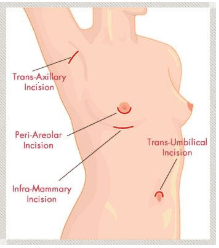
4. Trans-umbilical, this is an incision done through the navel or belly button where an endoscopeA small optical video device occasionally used during surger... is used to push the implants up to the chest area. This procedure leaves very little scarring to the point it is almost undetectable. There are some downsides including the inability to use prefilled implants and the need for special equipment and specialised and intensive training of medical staff.
Diagram credit: profilecosmeticsurgery.com
How You Can Prepare Yourself for Breast AugmentationSurgery to enlarge and lift breasts, also known as a boob jo... Surgery
Getting the best outcome from your surgery is in the best interest of all parties and there are several things that you can do before any kind of surgery.
Some of these may seem obvious but are extremely important:
- Make sure you are well rested prior to the operation.
- Healthy nutrition prior to and post-operative will help you to heal quicker.
- Having a positive attitude is a big part of getting a positive outcome.
- Listen to and follow your surgeon’s instructions. Your friends that may be full of advice are no substitute for your surgeon’s advice as he/she knows what to expect in the operating room and knows what needs to be done before and after your surgery.
- Be honest with your surgeon. Tell them about any previous cosmetic procedures you may have had.
- Inform the surgeon about any medications or drugs you are taking, whether they be prescribed, therapeutic or recreational.
- Let your surgeon know if you are taking aspirin or other anti-inflammatory medications. Your surgeon may ask to stop taking these prior to your surgery.
- Make them aware of any illnesses you may suffer from.
- If you smoke cigarettes, you should quit at least 2 weeks before your surgery.
- Be prepared. Buy any items you’ll need after your surgery a couple of days prior. Some easy to prepare meals, any dressings, scarThe result of the body’s natural healing process to replac... reduction creams or oils and pain medication. Your surgeon will have given you a prescription in your final consultation prior to surgery.
- Wear loose fitting and comfortable clothing on the day of your surgery. Preferably wear a top that is front opening with a zipper or buttons.
- You will need to arrange transport to and from the hospital or clinic.
In your final consultation before surgery, your surgeon will usually provide you with a list of things that you should and should not do.
There are some things that are specific to your breast implantA medical device placed inside the body to enhance a certain... surgery for you to consider:
- Ensure that everything you need, such as food, clean clothes, TV remote and anything else you may need is within easy reach and below your chest level, so you don’t have to raise your arms after your surgery.
- Lots of pillows you should load your bed with pillows. You will need to maintain and sleep in an elevated position for about a week after your breast implantA medical device placed inside the body to enhance a certain... surgery. A wedge pillow will help keep you elevated.
- Your surgeon will tell you to wear a compression garment to support your breasts for up to 3 months following your surgery. Your surgeon will let you know where to buy these.
What Can I Expect During My Breast AugmentationSurgery to enlarge and lift breasts, also known as a boob jo... Surgery?
The length of time the operation will take will vary depending on your requirements and the type of procedure you are undergoing. Times can range from one to several hours.
The length of your hospital stay can vary depending on the type of surgery, your recovery after the surgery and if there are any complications after your surgery. In some cases, you can go home the same day.
As with any surgery you will be told to get a family member or friend to drive you to and from your surgery. You will probably feel tired and a bit dozy, even if you feel ok, you should not drive a car.

What to Expect After My Boob Job or Breast AugmentationSurgery to enlarge and lift breasts, also known as a boob jo... Surgery?
This time can be challenging. What you do during your recovery period will have a tremendous impact on the outcome of your procedure.
In consultation with your surgeon, a post op recovery plan will be provided that will include your care instructions. These instructions should be followed exactly to ensure the best and quickest recovery. Your surgeon may also give you prescriptions for pain medication to help ease any pain and discomfort. Usually pain medication such as Panadol is often enough. This can vary depending on your recovery and the procedure you have undergone.
Usually you will be able to return to most of your normal activities between one and two weeks after your breast implantA medical device placed inside the body to enhance a certain... surgery. This will depend on the procedure and your recovery.
Breast augmentationSurgery to enlarge and lift breasts, also known as a boob jo... surgery should have no effect on breastfeeding. Your milk glands, in your breast tissue will determine how much milk you will produce, and implants won’t interfere with the function of your milk glands.
If you exercise or are a regular gym goer, you may be able to return to the gym 5 or 6 weeks after your surgery. Depending on your recovery and the procedure you could need months to recover fully and start working out again. As a rule, it is recommended that you avoid heavy lifting for at least 6 weeks after undergoing your breast implantA medical device placed inside the body to enhance a certain... surgery.
What are some of the after-effects of breast augmentationSurgery to enlarge and lift breasts, also known as a boob jo...?
- Bruising around your breasts should begin to fade in around 7 days. It may take some weeks for your breasts to soften and settle into a natural or lower position. They may feel hard and a little high on your chest to begin with.
- You will feel chest pain and discomfort that will diminish as your chest muscles stretch.
- You may feel a lack of mobility that includes greatly diminished arm strength and/or the inability to get yourself out of bed. This may last for two or three days, especially after under-muscle breast implantA medical device placed inside the body to enhance a certain... surgery.
- Feeling pain in your arms and back is not unusual. Often this is caused because you will tend to hunch your back following surgery. Your sleeping position will be different to how you normally sleep due to discomfort and pain. This will diminish and improve over time. Non strenuous short movement exercises such as slowly moving your arms around in a circular motion and pushing away from the body, slowly increasing your range of motion as you are able, raise and lower your shoulders in conjunction with the other light exercises will help ease the discomfort.
- Any exercise or stretching must be done slowly to ensure that you don’t overstress your chest as it heals.
- Your incision will itch as it heals. This is common and is part of the healing process, it will lessen as you heal.
- Scars take time to fade or disappear. They can take up to a year to fully disappear or fade. This will vary from person to person and how closely you follow your surgeon’s instructions regarding your recovery, your general health and any scarThe result of the body’s natural healing process to replac... healing treatments that your surgeon recommends.
What Can I Do to Speed My Recovery after Breast AugmentationSurgery to enlarge and lift breasts, also known as a boob jo... surgery?
1. Follow your surgeon’s advice. Many people fall victim to thinking that because they have had 1 surgery the second one will be exactly the same. Each time you have surgery there is risk involved.
2. Using Ice on the chest area can help to reduce inflammation and swelling. Do not apply ice directly to the skin. Use a cloth or even a bag of frozen peas makes can make an excellent ice pack.
3. Do not undo bandages or dressings. No peeking! You may desperately want to see your new breasts, but you should resist the urge to look and you must keep your bandages and dressings on until you are advised by your surgeon. You may increase the risk of infection by exposing the wound area.
.
4. Use creams, Oils and treatments as prescribed or suggested by your surgeon to help reduce swelling, aid in scarThe result of the body’s natural healing process to replac... reduction, reduce redness, and help avoid discoloration.
5. There is a large variety of scarThe result of the body’s natural healing process to replac... treatments. After your scars have healed there are many ways of diminishing or minimising their appearance. Using an ointment that contains Retin-A, Vitamin E, emu oil or glycolic acid can useful in treating scars. Wounds heal differently from person to person. It is impossible to predict how your scars will heal. Let your surgeon know if you have scarred badly in the past.
6. You may want to protect sensitive nipples by wearing a nursing pad.
Risks and Complications Associated with Breast AugmentationSurgery to enlarge and lift breasts, also known as a boob jo...
With any surgical procedure there are risks involved. You should make yourself aware of the risks before you consider breast augmentationSurgery to enlarge and lift breasts, also known as a boob jo... surgery.
One of the best ways to reduce your risk is to find a competent, fully qualified surgeon who specialises in breast augmentationSurgery to enlarge and lift breasts, also known as a boob jo.... Look for someone who has received formal training and who has performed the procedure many times.
These are some complications specific to post op breast augmentationSurgery to enlarge and lift breasts, also known as a boob jo... surgery:
- You may suffer from a loss of nipple sensation. This can be a result of your nerves around the nipple area being cut or over stretched. This can be more prevalent if the incision is made on or near the areolaDarker coloured skin around the nipple.. There is a generally low risk of this happening, but you should be aware of this possibility.
- Capsular contraction may occur, this can cause your breasts to feel hard. This can occur when an object like a breast implantA medical device placed inside the body to enhance a certain... is inserted into your body. Your body may form a lining around the object and is programmed to shrink this lining the same way it does with scarThe result of the body’s natural healing process to replac... tissue. This is a natural occurrence and as this happens the implants will be squeezed and tightened within the breast cavity. In some extreme cases your implants will need to be replaced, or even removed, as a result of extreme capsular contractureWhen scar tissue forms around the breast implant and tighten....
- Some surgeons comment that when implants are too big relative to body size and composition, can lead to a higher incidence of capsular contractureWhen scar tissue forms around the breast implant and tighten.... You should always follow your surgeon’s advice on optimal size.
- In some severe cases of capsular contractureWhen scar tissue forms around the breast implant and tighten... your implants may rupture or shift. Damage and trauma to the breast area from surgical instruments may also result in rupturing or shifting of the implantA medical device placed inside the body to enhance a certain....
- Your implantA medical device placed inside the body to enhance a certain... may ripple against the tissue or muscle after it has settled into place. Textured implants have a higher tendency than smooth ones to ripple as the implantA medical device placed inside the body to enhance a certain... can ‘stick’ to the muscle of the breast wall.
- You should be aware that implants can sometimes interfere with mammogramA diagnostic procedure to take x-ray images of breast tissue... results and the detection of suspicious lumps and lesions in the breast. You should always inform the radiologist about your implants before having a mammogramA diagnostic procedure to take x-ray images of breast tissue... or breast examination so that they can move the implantA medical device placed inside the body to enhance a certain... and get a better view of your breast tissue. In some cases, an ultrasoundA diagnostic test that uses high frequency sound waves to re... is preferred to a mammogramA diagnostic procedure to take x-ray images of breast tissue....
Some Facts About Breast AugmentationSurgery to enlarge and lift breasts, also known as a boob jo...
Breast implantsMedical devices inserted inside the breast to enlarge a brea... have a use by date, they can wear out like any other object or device. No one can say exactly how long an implantA medical device placed inside the body to enhance a certain... will last, they usually have a life span of 10 to 20 years. Usually silicone implantsBreast implants full of a thick elastic gel. will last longer than saline implantsBreast implants filled with a salt water solution..
It can be obvious when a salineSalt water solution. implantA medical device placed inside the body to enhance a certain... needs to be replaced, this is because once the outer shell has broken the salineSalt water solution. starts to leak and the breast looks saggy or deflated.
It can be more difficult to tell when silicone implantsBreast implants full of a thick elastic gel. need to be replaced and it is for this reason that you are advised to have regular MRIa painless medical imaging procedure to view bones, organs a... scans to establish if there have been any ruptures.
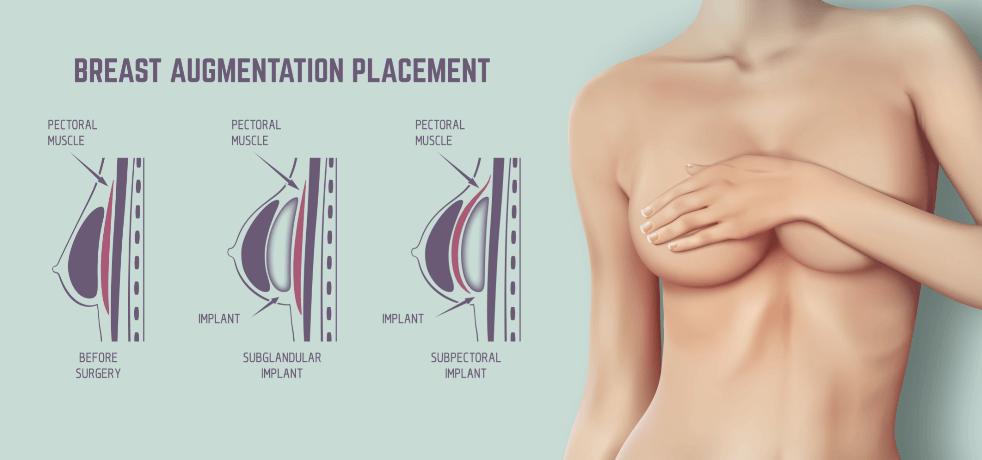
What happens if I change my mind?
You may decide that after having breast augmentationSurgery to enlarge and lift breasts, also known as a boob jo... surgery that you don’t like the feel or size of your new breasts. Your breast implantsMedical devices inserted inside the breast to enlarge a brea... can be removed or replaced if you wish.
There is a risk to women who have large breast implantsMedical devices inserted inside the breast to enlarge a brea... removed that they may have some chest wall deformity and/or tissue loss. Also, when large breast implantsMedical devices inserted inside the breast to enlarge a brea... are removed this can result in sagging and breast lift surgery may be required.
What is The Cost of Breast AugmentationSurgery to enlarge and lift breasts, also known as a boob jo...?
As surgeons, anaesthetists and hospitals charges vary it is hard to give an accurate figure for the cost of a breast augmentationSurgery to enlarge and lift breasts, also known as a boob jo.... From our experience in financing these procedures the cost is between $8,000.00 and $18,000.00 Australian dollars.
The differences of range are due to pricing differences between surgeons, the complexity of the procedure and even the state where the procedure is done. Keep in mind that there is no one price fits all as every surgery is different. You should expect the costs to be higher if you are having combined procedures at the same time.
There is a very wide range in fees. This reflects the differences in a surgeons’ expertise or specialisation in breast augmentationSurgery to enlarge and lift breasts, also known as a boob jo... surgery, the level of their professional qualifications, professional recognition, popularity and demand.
If you have tried to obtain the exact cost of breast augmentationSurgery to enlarge and lift breasts, also known as a boob jo... in Australia, you will already be aware that an exact figure is very hard to get prior to a consultation with a surgeon. Most surgeons will not usually provide standardised costs for breast augmentationSurgery to enlarge and lift breasts, also known as a boob jo... and other cosmetic surgical procedures because the law does not allow them to. Once you have had your consultation with your surgeon, the fee you will be given usually includes the cost of the breast augmentationSurgery to enlarge and lift breasts, also known as a boob jo... surgery, pre-operative and after care. Check that this is the case before you go ahead.
You may be able to obtain a price by calling or emailing a surgeon’s office or practice, but this figure may not be accurate as you may require a breast lift and/or implants which can greatly increase the price. You will need to get together with your surgeon and discuss your specific needs to obtain a personalised and firm price.
I’ve helped a lot of people choose the best loan for the plastic surgeryThe surgical specialty or procedure involved with the restor... they have asked about and find that helping them plan for the expense that comes with the surgery helps them plan for post-surgical bills in a more organised manner. Get your cosmetic surgery loans with Loans 123.
Breast Lift also known as MastopexySurgical procedure to lift the breasts..
A Breast lift is a surgical procedure that raises or lifts your breasts and can give them a more youthful-looking shape or contour.
A breast lift can also reduce loose skin that may be a result of age, weight loss, pregnancy or breast feeding. A breast lift can include reducing the size of the areolaDarker coloured skin around the nipple.. (the darker skin around your nipple.)
Some Facts About Your Breast Lift
- Having breast lift surgery on its own will not increase the size of your breasts.
- A breast lift is possible at any age. Most surgeons will recommend waiting until your breast development is complete before any breast-related cosmetic surgery.
- Your surgery will normally take between 1-3 hours depending on how much work is involved.
- After a breast lift you may find that you do not have as much sensation in your nipples and areolas as you had prior to your breast lift surgery.
- When a breast lift is performed in conjunction with breast augmentationSurgery to enlarge and lift breasts, also known as a boob jo... surgery, the size and shape of your breasts can be changed.
- In Australia breast lift surgery was the fourth most popular cosmetic surgical procedure.
- Women aged between 35 and 50 were the biggest consumers of breast lift surgery.
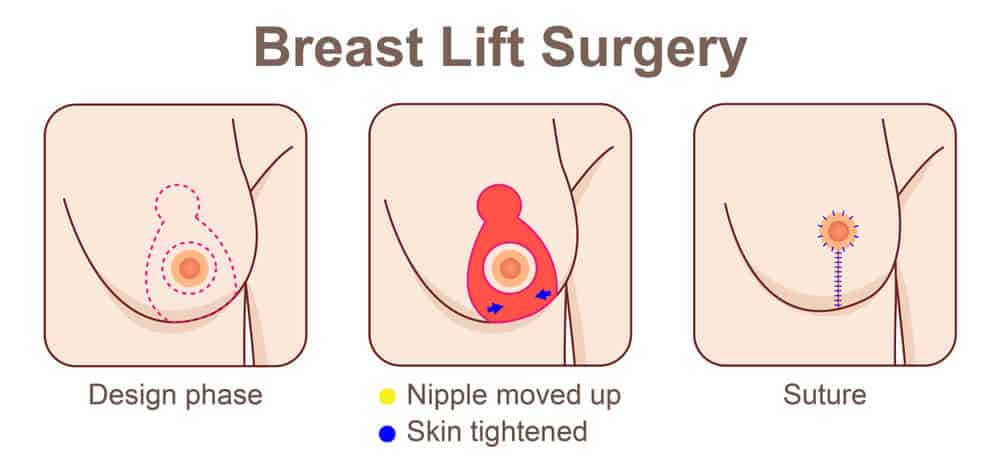
Some Reasons for Choosing to Have Breast Lift Surgery.
- Your breasts are saggy, hang down loosely or have lost their firmness
- You may not want bigger breasts, but you want them where they used to or should be.
- If you feel your breasts are too big, you may choose to have a breast reduction at the same time.
- When you take your bra off and your nipples are positioned below the crease of your breasts.
- Because pregnancy and breast feeding can change the shape of the breasts, breast lift surgery is often preformed after pregnancy. The good news is that breast lift surgery does not damage the nipples and milk ducts and is unlikely to affect a woman’s ability to breast feed. After pregnancy and breast feeding, you may be entitled to claim a Medicare rebate, speak to your surgeon about this.
Things to talk to your surgeon about once you’ve decided to have a breast lift.
You should discuss the following with your surgeon prior to surgery:
- How do you want to reposition your nipples and areolaDarker coloured skin around the nipple.? How high and at what level do you want them? Talk to your surgeon who will discuss your wishes and the likely realistic outcomes. They may use imaging software to give you a visual picture.
- If you want to have an AreolaDarker coloured skin around the nipple. reduction your surgeon can make your breast lift incisions in and around the areolaDarker coloured skin around the nipple. resulting in the removal of some of the dark pigment.
- There are three types of breast lift. This will depend on the current size and shape of your breasts. A discussion with your surgeon can help you make this decision.
Three types of breast lift:
Donut – Around the areolaDarker coloured skin around the nipple. only, this site for the incision will be used if very little skin is to be removed.
Lollipop – Around the areolaDarker coloured skin around the nipple. and then a vertical incision down to the crease of the breast.
Anchor – Around the areolaDarker coloured skin around the nipple., a vertical incision down to the crease of the breast and then a horizontal incision along the breast crease at the very base of the breast.
The fewer incisions made, the less scarring will develop.
It is possible to have breast implantsMedical devices inserted inside the breast to enlarge a brea... in conjunction with a breast lift.
What can you expect?
After the incisions have been made your excess skin is removed and your nipples are repositioned. Your skin will be rearranged or re-draped before being stitched back together. The incisions will start off being red or pink in colour. With the aid of time and appropriate scarThe result of the body’s natural healing process to replac... management and treatment, the scars will fade. This can vary from person to person.
Your breasts will be bruised and swollen for several days and you may have small tubes inserted that allow any fluids accumulated in the wound to drain, these will be removed after a day or so. You will have some discomfort and mild pain from time to time, this is normal. If you have severe pain, you should contact your surgeon immediately.
Your breasts will have gauze dressings and will usually be covered with a surgical bra or elastic bandage.
You will need to sleep on your back for at least the first week or so after your breast lift surgery.
You may need to wear a compression garment for up to 3 months depending on how well you heal. This is to keep swelling to a minimum and to help support your breasts as they heal. Your surgeon may recommend wearing a sports bra for up to six weeks after surgery. Swelling can sometimes last several months.
Loss of or diminished sensation in your nipples and areolas is normal and is usually temporary. It is not unusual for weeks, months or even a year before normal sensation returns.
You should begin walking as soon as you can to help prevent blood clots.
You should avoid strenuous or overly energetic activities. Vigorous exercise and heavy lifting should be avoided for at least a month or longer as directed by your surgeon.
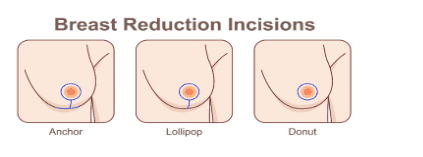
A Breast Reduction or Mammoplasty.
Breast reduction surgery also known as reduction mammoplastyThe surgical removal of breast tissue to decrease the dimens... is a surgical procedure that lifts and reduces the size of the breasts.
Breast Reduction Facts
- A breast reduction is a surgery performed on women.
- The most common used incision for a reduction is the anchor lift.
- Some women that have very large breasts suffer from back and neck pain.
- Most women choose breast reduction surgery for medical and/or aesthetic reasons.
- A breast reduction surgery may take 2-3 hours depending on the amount of work required.
- Breast reduction surgery is performed under a general anaesthetic.
- Having breast reduction surgery aims at bringing balance and symmetry to the figure. This can be important especially when a woman has a small frame and large breasts that are out of proportion.
- Breast reduction surgery involves reducing the overall volume, weight and profile of your breasts and can in some cases involve moving the nipples to a new location.
- Male breast reduction is called gynecomastia.
Some Reasons women choose to have a breast reduction
Some women with very large breasts can suffer physical discomfort in the form of back and neck pain. Large breast can cause bra straps to dig into the shoulders and this can cause bruising.
Many large-breasted women feel extremely self-conscious.
If you are going through puberty and have experienced or are experiencing abnormal or excessive and rapid growth of the breasts, you may have a rare condition called breast hypertrophy. Talk to your doctor if you think you may have this condition.
A Breast Reduction May Help If You Have Any of These Issues:
- If you have very large breasts and they are causing you physical problems, that may include pain in your shoulders, back or neck.
- Large pendulous, misshapen, heavy breasts with nipples that point downward.
- If your breasts that interfere with your quality of life, enjoyment, routine activities or restrict your lifestyle.
- If one of your breasts has grown noticeably larger than the other.
- When your shoulders show deep indents and/or bruising from your bra straps.
- If the weight of your breasts interrupts or disrupts your sleep.
- When the skin in the crease of under your breasts is sweaty and constantly irritated.
- If you feel self-conscious and/or embarrassed about the size of your breasts.
- If you have trouble finding clothes and bras that fit.
- You want your breasts to be in keeping or proportion with the rest of your body.
- If your breasts have grown after menopause and this is causing you to feel awkward, unbalanced or self-conscious.
Breast reduction is common after pregnancy if they find their breasts have grown.
Some women choose to have a breast reduction procedure before having children whilst others wait until after they have had children.
It is always best to discuss your plans for breast reduction with your surgeon, who can advise you on any impact on breast-feeding after surgery.
Contact www.loans123.com.au or call us on 1800 100 100
Jewellery Loans. The 4 Cs.
I Want a Special Piece of Jewellery?You don’t have to settle for mass produced or production line jewellery. Pieces of beauty, quality and value can be custom designed for a lot less than you may believe. You deserve to have a craftsman created piece of jewellery and...
Alfresco Kitchens by Pyro Designs
WA's Alfresco Kitchen ExpertsThe Pyro Designs StoryPyro Designs have Alfresco Kitchens designed to suit our unique WA lifestyle. WA and Perth are well suited for outdoor living and entertaining. What sets Pyro Designs apart from other outdoor kitchens is that their...
Riverina Pools, Luxury And Quality At An Affordable Price
Installing a quality Riverina pool will enhance the value of your home and ensure that you have many years of enjoyment and pleasure. Riverina pools can integrate one of their stunning swimming pools into your back yard, front yard or beside your house. Upgrade to the...

